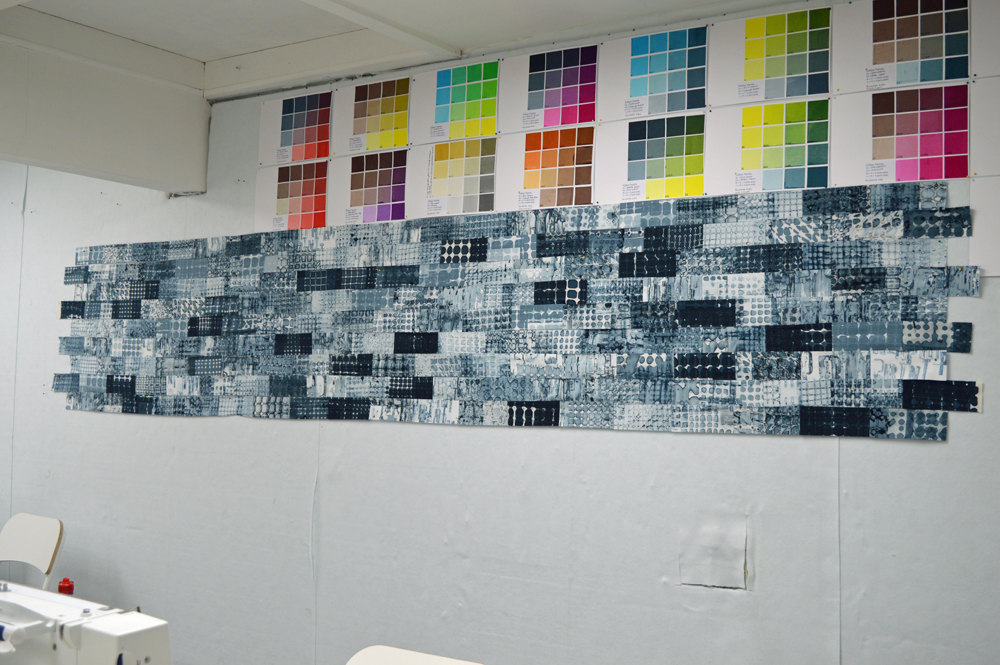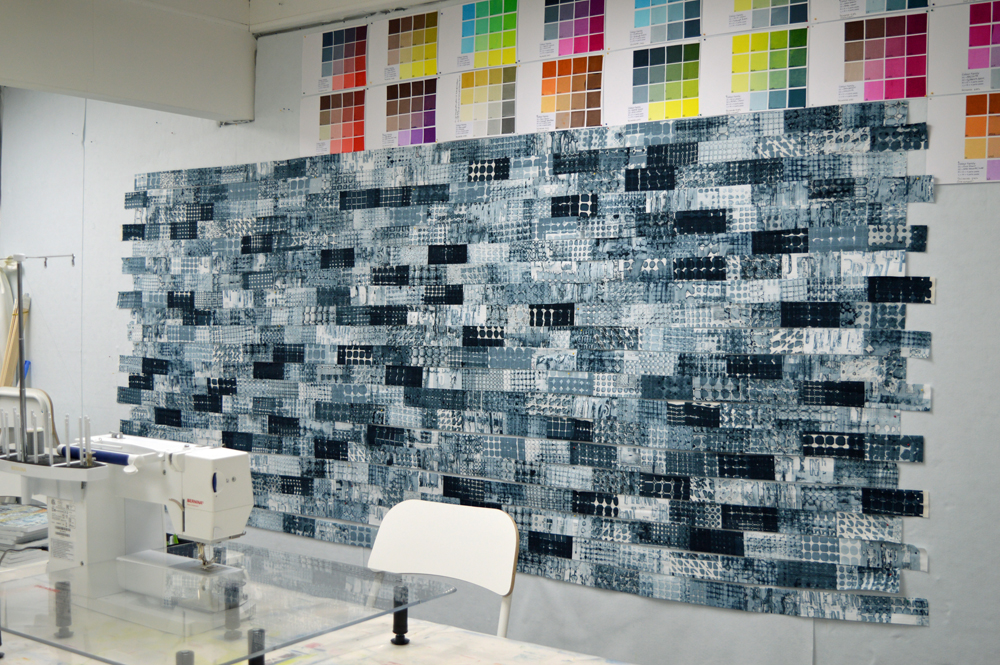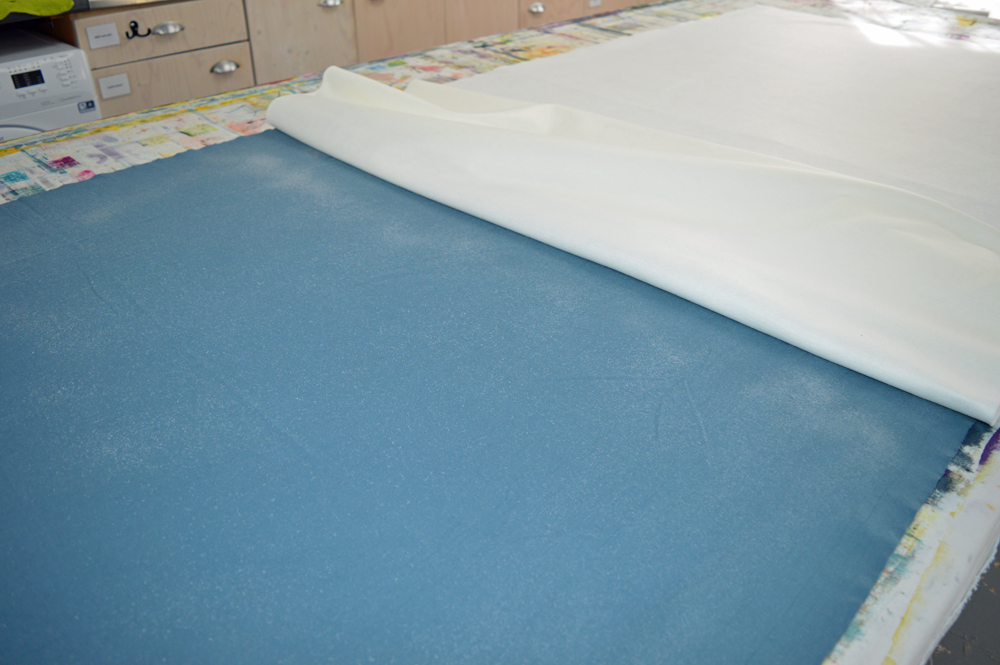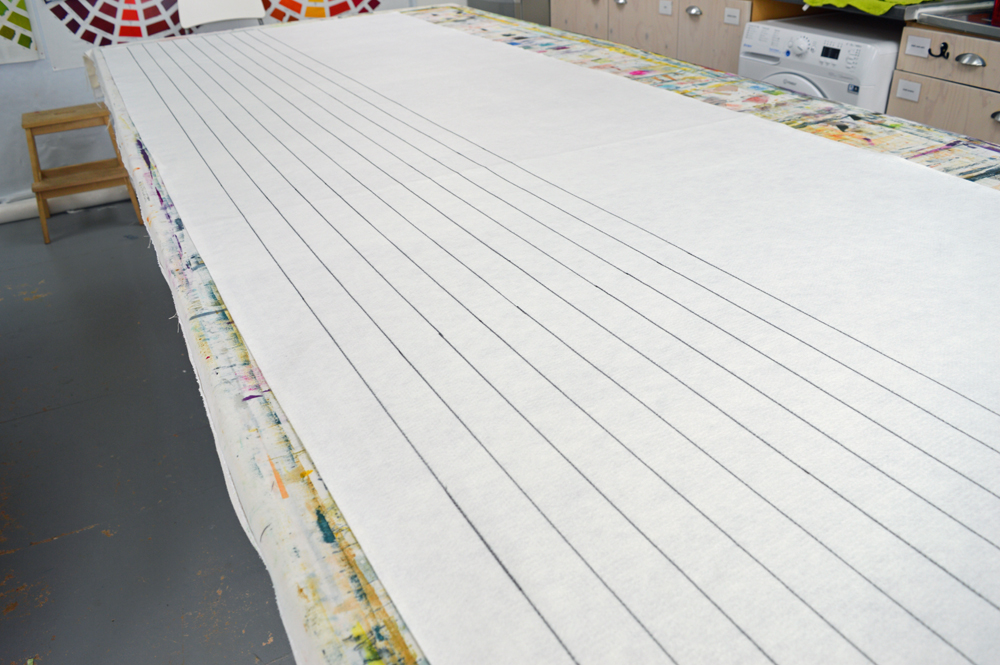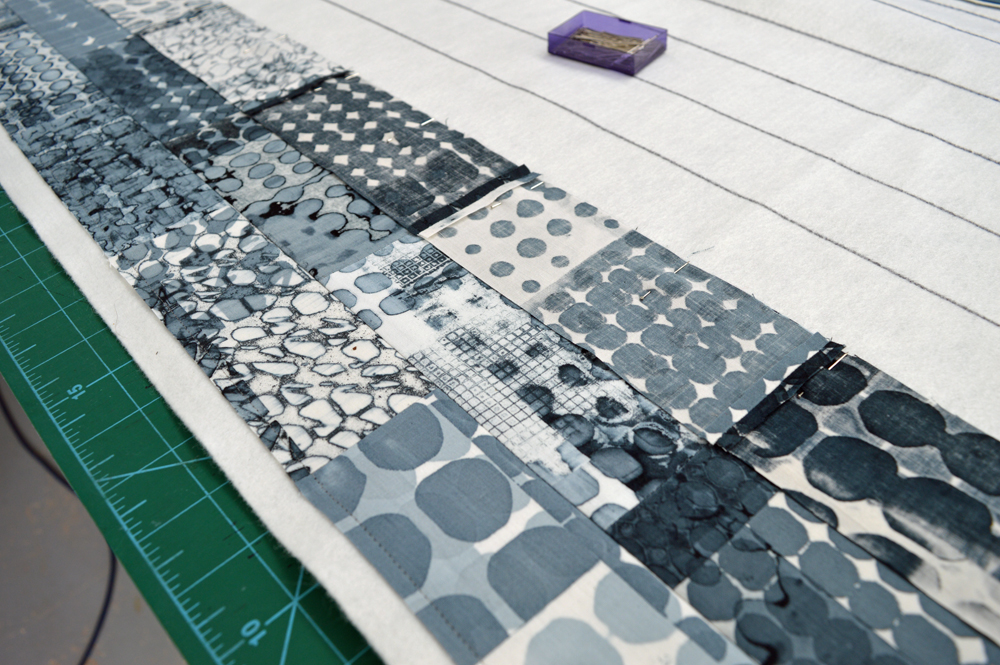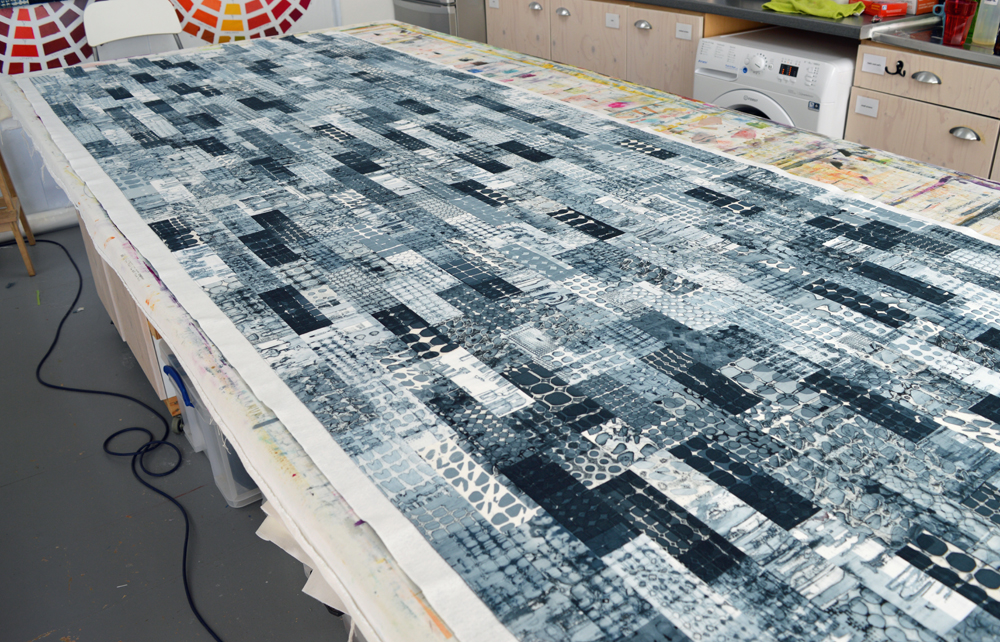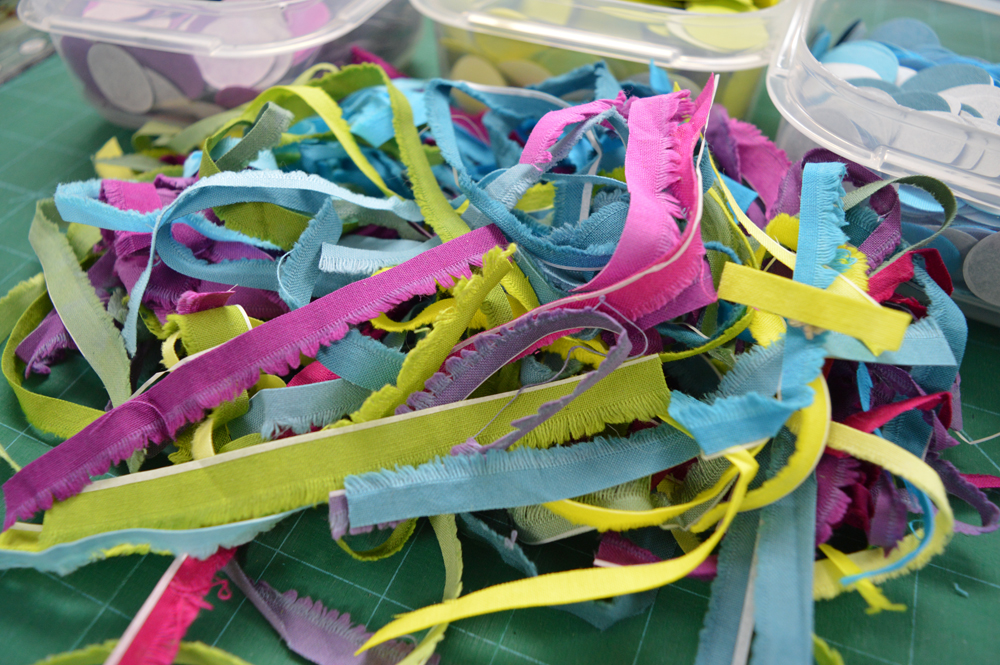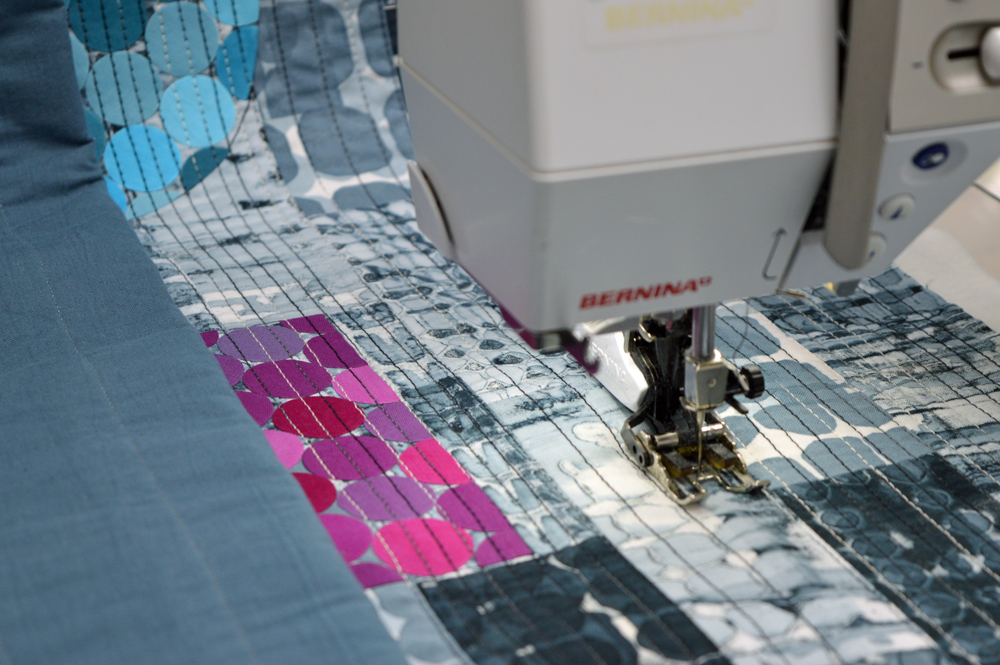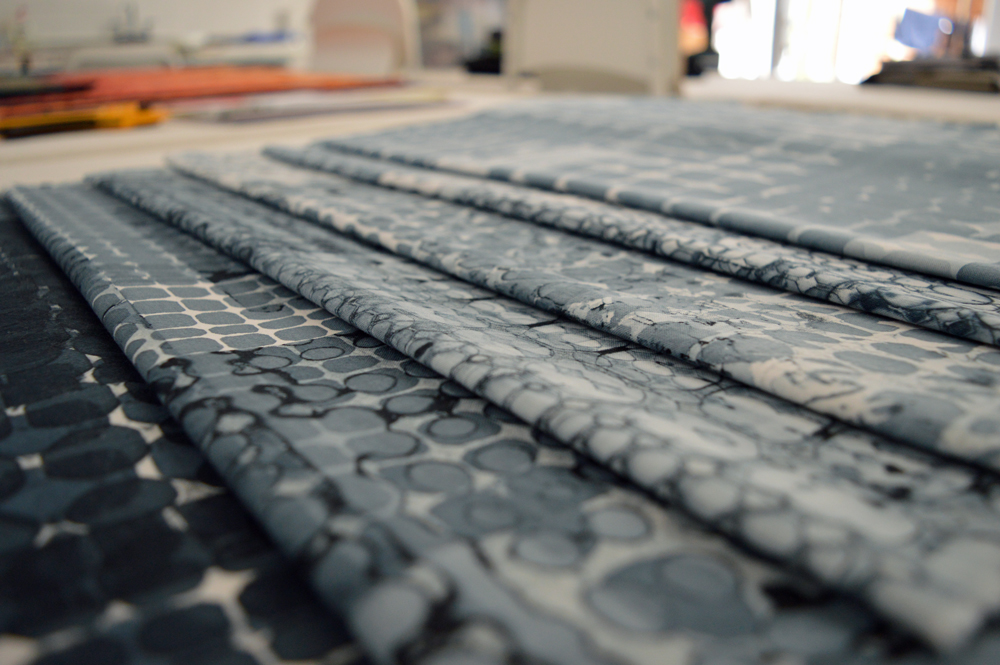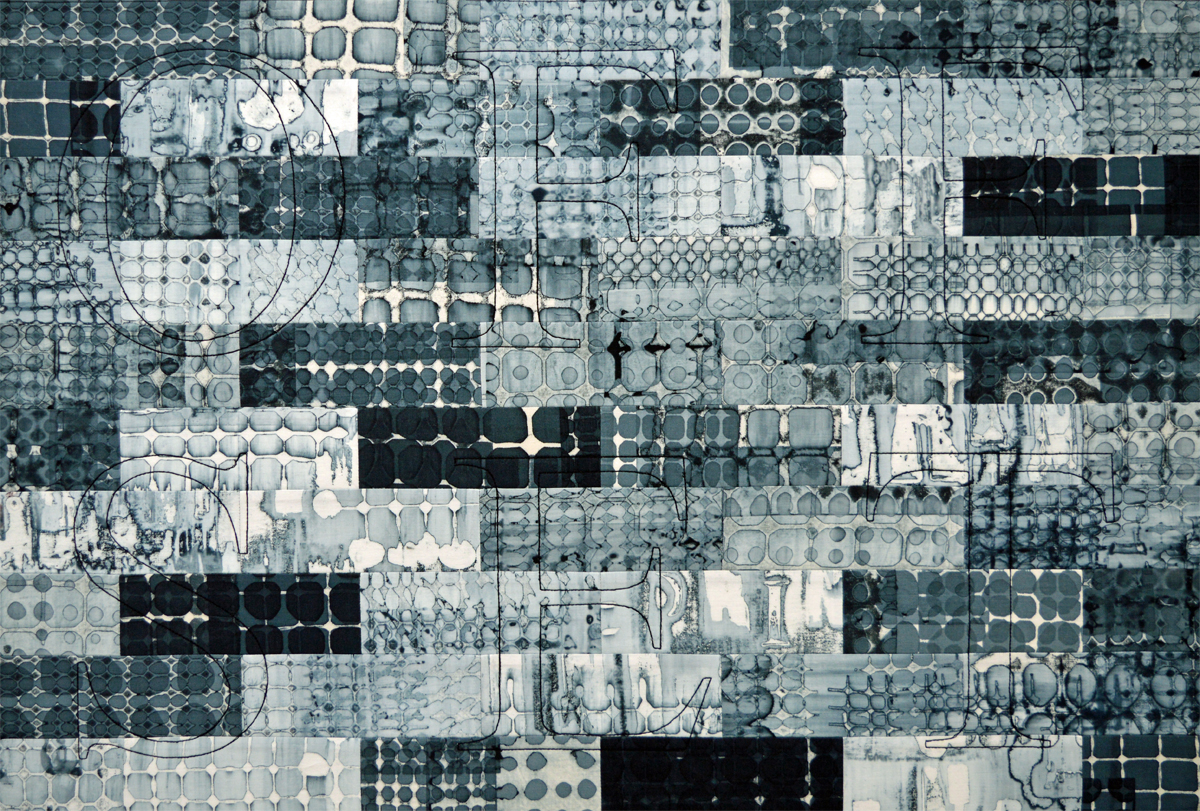I stretched some string across the fabric and added some shredded paper. I used an open screen with rust brown and petrol green thickened dyes. The screen picked up pieces of shredded paper as I printed creating a rather chaotic pattern. I didn’t like the areas of white, unprinted fabric so used a plastic card to scrap very pale petrol green across the whole piece.
Sometimes I wish there was a second me. Alt-Leah would go with the flow; she would be spontaneous. She wouldn’t have a plan A, B or C and definitely wouldn’t track her hours in the studio. Today is a lovely sunny day so alt-Leah would probably have kidnapped her grandson from school and driven to the coast to play in the sand, paddle in the sea and eat fish and chips out of their paper followed by ice cream. Tomorrow she might spend the day making replacement cushion covers for her garden furniture using the fabrics she printed during the Simply Screen Printing workshop she ran at the weekend. Because they really are rather lovely fabrics. Which isn’t always guaranteed when demonstrating techniques.
Unfortunately there is no alt-Leah, just me with my somewhat ambitious exhibition at Festival of Quilts to make art for. So these lovely fabrics will join an increasingly large pile of fabrics that I can use as teaching samples. But I can at least give them an audience! And, of course, there was the wonderful work my students did!
This piece was printed using a thermofax screen and screens made using positive and negative sticky back plastic resists. Again I used rust brown and petrol green thickened dyes and killed the white space with a layer of very pale petrol green.
In this one I used masking tape to add a resist to my screen. I used the screen to print on top of crumpled fabric. After each print I moved the screen and carefully transferred the textured dye that had clung to the back of the screen onto this piece of fabric. Difficult to explain but a great technique. Same colours and again finished with a layer of very pale petrol green.
This was the piece of crumpled fabric that I printed onto. It gets a bit messy as you rearrange the fabric in-between each print. I got distracted when I was printing this and stopped too soon. There was lots of white fabric so I added a layer of intersecting lines using a thermofax screen. Same colours and same final layer.
Top left: Val Lewis breakdown printing. The screen was made with black thickened dye and she is pulling through with a slightly muddy golden yellow.
Top right: Val again, she used a thermofax screen and great colour control.
Bottom left: Pat Allen’s breakdown printed fabric. The screen was made with a black grid and objects embedded in turquoise dye.
Bottom right: Hilary Fidler using a plastic card to add a final layer of pale colour. Her first layer used an open screen on fabric that had shredded paper and paper circles scattered it. Her second layer was thermofax motifs in a mustard yellow.



















